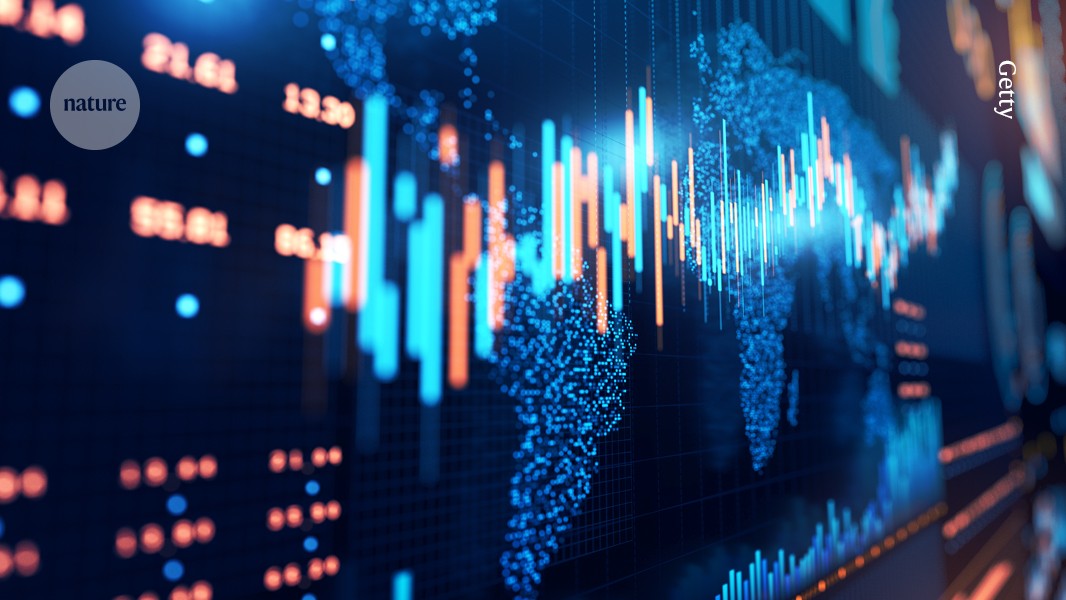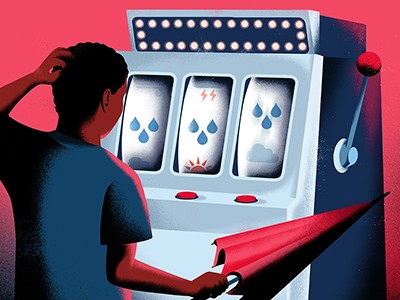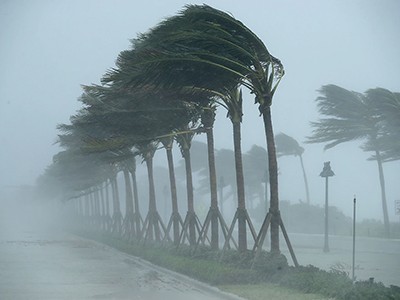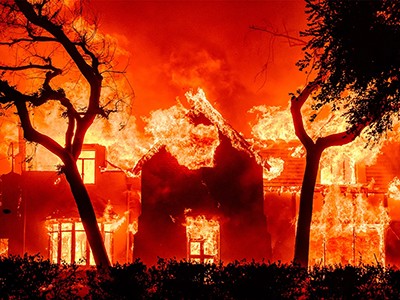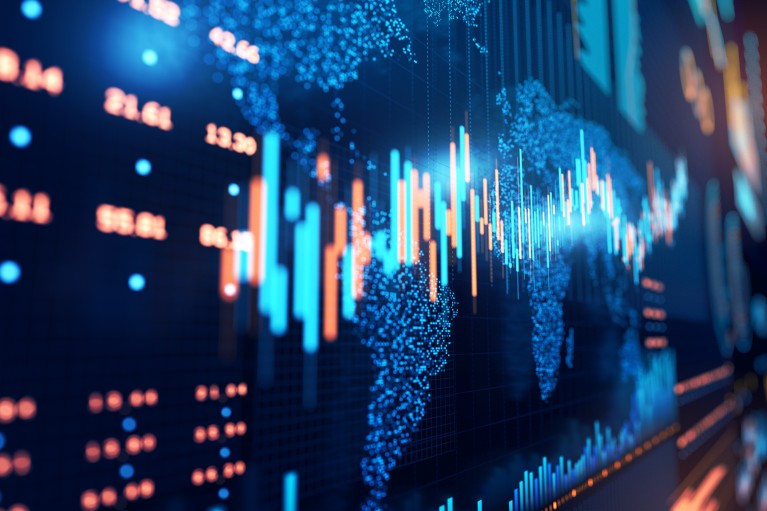
Financial models can fail when unprecedented events hit.Credit: Getty
Amid wars, political earthquakes, the aftermath of the COVID-19 pandemic and the accelerating effects of climate change, the future seems more unpredictable than ever. That is true even though our ability to predict it — using simulations, artificial intelligence (AI) and big data — has never been so great.
But could part of the problem be part of the solution? Financial markets have developed ways to hedge against risks, to keep the global economy stable. Insurers foresee and cover costs of rare events, such as natural disasters. But risk tools fail when uncertainties get so great that no predictions can hold.
We argue that a fresh set of financial tools must be designed to hedge against uncertainty. It’s crucial if the world’s systems are to bear the brunt of unexpected crises in the future. And we set out pointers here.
But, to understand this problem, a crucial distinction needs to be grasped: the difference between risk and uncertainty. This isn’t just academic hair-splitting — it shapes how society tackles challenges ranging from climate change to AI to the future of the planet.
Managing risk
In 1921, economist Frank Knight made an observation that would transform how people think about the unknown. Risk, he suggested, is quantifiable. It is like a game of dice, in which we can calculate the exact probability of rolling a six.
Why probability probably doesn’t exist (but it is useful to act like it does)
Probability tools have been developed to analyse risk. Actuaries, insurers and sports bookmakers all work with them. As long as these professionals have a reasonable forecast, based on historical data, of how likely something is to happen, they can make an informed decision on whether to put aside money to cover the event or not.
Financial markets also have sophisticated tools to handle risk. The Black–Scholes model for pricing stock options1, for instance, is based on analyses of historical risk. Banks use ‘value at risk’ models to estimate their potential losses with statistical confidence2.
Insurance companies increasingly use climate models to factor in how global warming will affect their bottom line, even in conditions that are unprecedented. For example, by 2030, more than 500,000 homes in Australia, out of 3 million at risk, might face annual flood threats so high that they become uninsurable3.
But it’s not always possible to calculate the odds. And that’s where uncertainty steps in. Some events have elements of both risk and uncertainty. For example, an earthquake, pandemic or flood might be known to happen once a decade or once a century on average. But it’s impossible to predict precisely when, where and how bad it will be.
At other times, outcomes are impossible to foresee. For example, researchers can speculate on the range of disruption AI might cause to industry sectors, but they cannot pin down the likelihoods in a meaningful way. Such events are ‘known unknowns’, in that scientists are aware of them but it is impossible to fully encapsulate them.
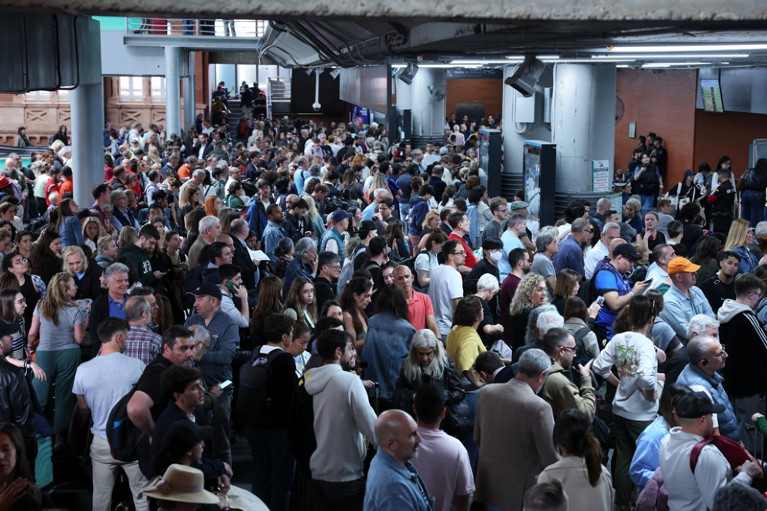
Train passengers were stranded when a massive power cut hit Spain in April.Credit: Thomas Coex/AFP/Getty
Companies struggle to hedge against truly uncertain events. Businesses can find their factories destroyed by war, industries might be undercut by AI or changes in immigration policy could affect labour forces. Ultimately, these unforeseen events lead to financial losses, and fresh approaches to cushion these losses are sorely needed.
No current trading instruments enable us to tame uncertainty. The Cboe Volatility Index (see go.nature.com/4l6zau4), for instance, often called the ‘fear index’, measures asset-price volatility, which is a quantifiable risk. Catastrophe bonds4 pay out to insurers when unexpected but predictable events, such as hurricanes, happen. But they don’t cover unpredictable events.
Growing uncertainty
Uncertainty seems to be on the rise. Society has never before witnessed conditions like those now emerging. Researchers lack adequate models of how society, the environment and cutting-edge technologies work, in isolation or together.
Climate change, for example, presents a parade of unknowns. How will shifting weather affect agriculture? How will coastal cities adapt to rising seas? What industries will emerge or vanish in a zero-carbon economy? The variables interact in ways too complex for conventional risk models to capture.
Hurricane risk in a changing climate — the role of uncertainty
Similarly, AI introduces more uncertainties. How will it reshape education, jobs and creative work? What will be the role of humans if AI exceeds our capabilities? What forms of cyber vulnerabilities might emerge? People have no idea how humans and machines will or even can co-evolve.
Political and economic uncertainty is also soaring. Conventional models struggle to account for the impact of social media on political movements, the fragmentation of global trade networks or the emergence of digital currencies. We’re no longer just dealing with known unknowns, but are in the dead space of unknown unknowns.
Financial norms are shifting
The everyday workings of the financial sector are much more uncertain today than they were even a year ago. Basic assumptions no longer hold. For example, since US President Donald Trump took office in January, the role of US government debt as a fundamental, safe macroeconomic benchmark has been challenged.
The value of a financial asset is usually set using the capital asset pricing model (CAPM)5. But this model is designed to always grant an investor a pay-off in relation to the risk of the asset itself — the riskier the stock you invest in, the higher the return you should receive.
Using the CAPM, the minimum level of return has been tacitly agreed to be that of a short-dated investment called a US government treasury bill — essentially a loan from an investor that the treasury promises to repay. Before January, this instrument was seen as ‘risk free’ — there was almost no chance of the US treasury being unable to pay back the monies borrowed in 90 or 180 days. But uncertainty around the US economy means that capital is draining from the United States to Europe because global investors no longer think that US debt is the least risky investment in the world.
As well as devaluing the dollar and moving to a tariff-based trading world, Trump’s Mar-a-Lago Accord proposes levying a charge on foreign owners of US debt and dictating repayment terms of 100 years. If that happened, it would render US treasury bills financially worthless to investors. Investors from different countries might value US investments differently from each other, because each would rely on their own understanding of the risk of holding US debt6. The CAPM would no longer apply.
When there is uncertainty, but no way to price it, the danger of catastrophic falls in asset values is there but cannot be computed. Investors will move to assets with lower degrees of uncertainty6 and interest rates will come under strain.
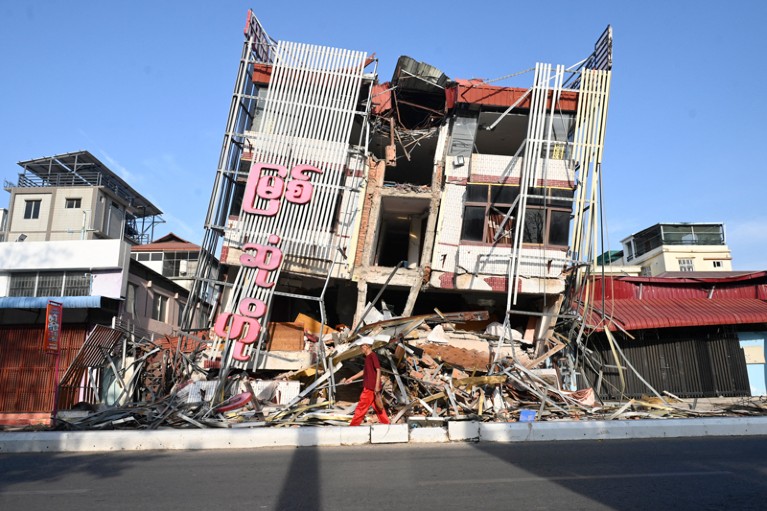
A devastating earthquake in Myanmar killed thousands of people in March.Credit: Sai Aung Main/AFP/Getty
Technology offers some ways to assess uncertainty. By harnessing computing power and AI, scientists can scan millions of news articles, political speeches, social-media posts and financial reports for words, sentiments and tones that are associated with uncertainty7. Such analyses have been used to develop real-time measures of economic and cryptocurrency pricing and policy uncertainty8,9. Central banks also scrape product-price information from the Internet to give real-time inflation measures (see go.nature.com/4ll5cew).
Yet, like conventional risk models, these big-data tools are subject to the ‘garbage in, garbage out’ problem. They depend on human inputs and can add yet more uncertainty, rather than measure it.
Finance experts need to think more radically.
Three pricing tools
Transforming uncertainty into something that can be managed requires building a financial architecture that explicitly prices, transfers and rewards adaptive capacity — the ability to thrive under the challenges of uncertainty — rather than merely dealing with known risks.
The approach we propose rests on three pillars: instruments in which prices and pay-offs vary with real-time uncertainty; markets that monetize resilience; and governance frameworks that ensure integrity and liquidity (ease of transferring an asset to cash). Here we sketch potential features of some assets that might be developed.
Uncertainty bonds. Many organizations issue debt (essentially a loan) with an interest rate that varies relative to a benchmark, such as another interest rate, inflation or profitability. We propose that uncertainty bonds fix their payout on the basis of an independently governed and calculated uncertainty index.
The index would need to capture elements such as policy volatility, market sentiment swings and supply-chain disruption signals. It must have strict safeguards, including governance by independent regulators, regular data audits and transparent methodologies to prevent financial gaming.
When uncertainty (economic, trade or geopolitical, for example) is deemed high, companies would be able to withhold part of the payments they have promised, to ease financial strain. They would also have more money at hand to deal with issues arising during spikes in uncertainty.
Investors (banks, insurers or private individuals) would earn a premium for bearing the ambiguity; they would put their money at risk by loaning it to companies, with the payout dependent on the level of global uncertainty.
How to navigate uncertainty in an unpredictable world
Although this arrangement would not eliminate uncertainty, it would transform it into risk: a quantifiable situation in which companies insure themselves by getting a financial reward if a specific negative event occurs.
Think of it like insuring a home against fire damage: the fire is a spike in global uncertainty, the bond-issuing company is the owner of the house and the investor is the insurance company that insures the house. If there is no fire, the owner of the house pays an insurance premium to the insurance company for peace of mind. If, however, a fire burns down the house, the owner of the house delegates the financial burden of reconstruction to the insurance company, so that the owner doesn’t go bankrupt on top of losing their house.


